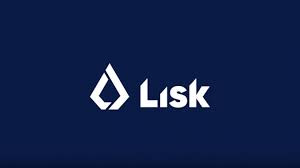What is Lisk?
Lisk is a cryptographic money expecting to fill in as a stage for decentralized applications (dapps), exceptional projects intended to stumble into an organization of PCs running shared programming.
The's venture will likely permit designers to move abilities all the more quickly for the structure of dapps, as it permits them to compose programs utilizing the Javascript and Typescript dialects, both broadly utilized in everyday web improvement.
Nonetheless, Lisk empowers engineers to make custom dapps and digital currencies by means of what it calls "sidechains," exceptional blockchains working inside the Lisk organization. These sidechains are bound to the Lisk blockchain and are adaptable to suit the requirements of Lisk dapps.
Since these blockchains are viable with Lisk, engineers can use assets like the task's product improvement unit, coding libraries and its cryptographic money, LSK.
The cryptographic money that controls the Lisk blockchain, LSK is expected to pay for the expenses of key tasks and for deciding on proposed updates to the product's standards.
One of the earliest blockchains for dapp improvement, the Lisk group has kept its clients refreshed on the situation with its guide through its true site starting around 2016.
For more standard updates, you would bookmark the Lisk be able to blog, which remembers tips and instructional exercises for the organization and its advancing innovation.
How does Lisk work?
The principle programming execution for the organization, Lisk Core, implements the convention's standards, keeping the PCs that run it in a state of harmony and working without a hitch.
The Lisk programming improvement pack (SDK) is utilized for building decentralized applications (dapps) that are viable with Lisk Core.
To get its blockchain and keep its conveyed organization of PCs in a state of harmony, Lisk utilizes an agreement framework called designated verification of-stake (DPoS).
DPoS use a continuous democratic framework to figure out which PCs running the product can make the following square on the Lisk blockchain. This implies any individual who claims LSK can assist with working the organization.
Each LSK token can be locked, or "marked," to address a vote. All proprietors who stake LSK then, at that point, vote in favor of 101 dynamic agents, who are answerable for making blocks.
There is a sum of 101 squares for every cycle, with around 10 seconds between each new square. Each square cycle is generally like clockwork.
For proposing and adding new squares to the Lisk blockchain, dynamic agents get the square's all out exchange charges and its award (paid in LSK digital money).
Dynamic representatives can likewise pick which level of the LSK they get to disperse to clients who decided in favor of them as a functioning agent, which further boosts citizens.






1 Comments
code
ReplyDelete